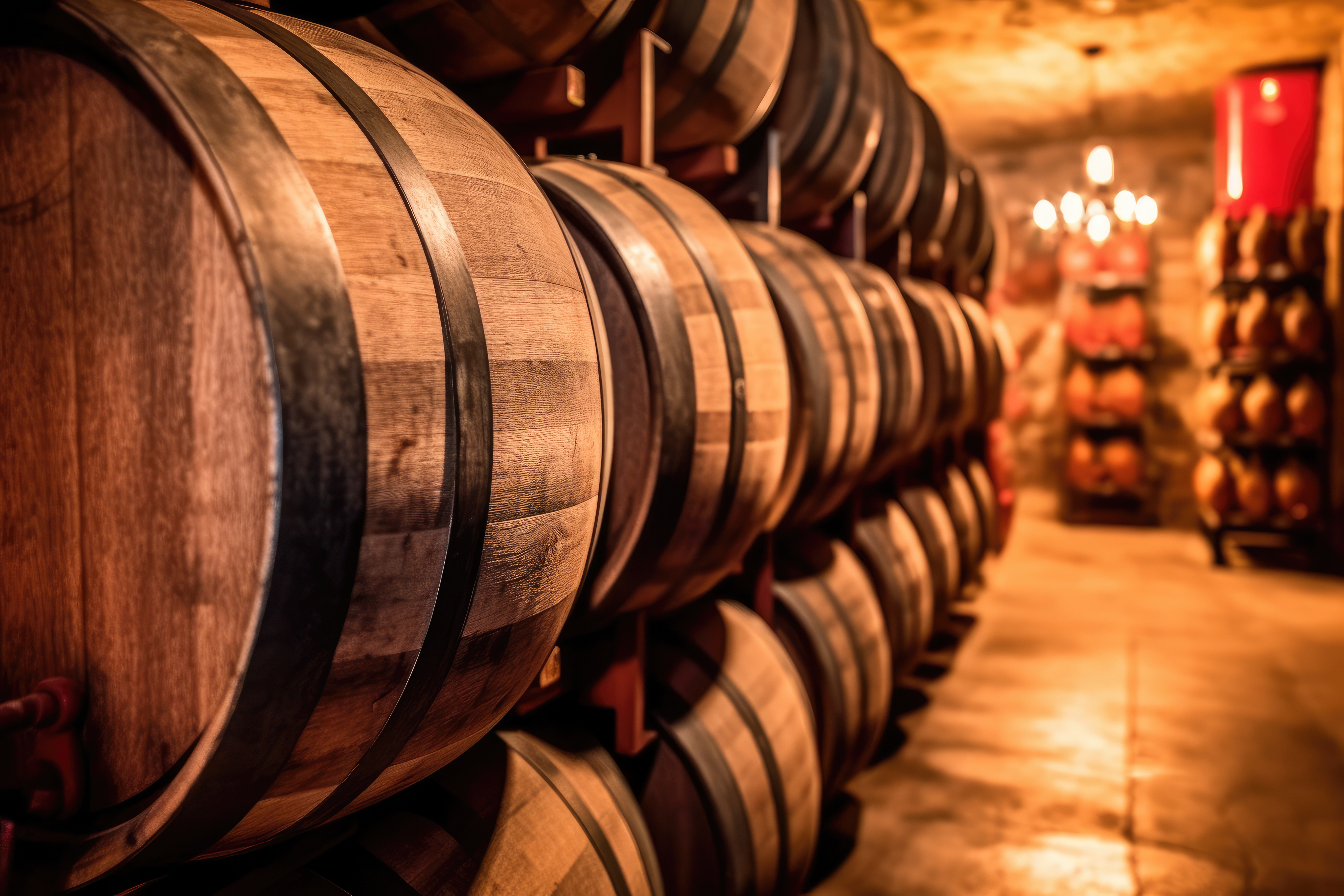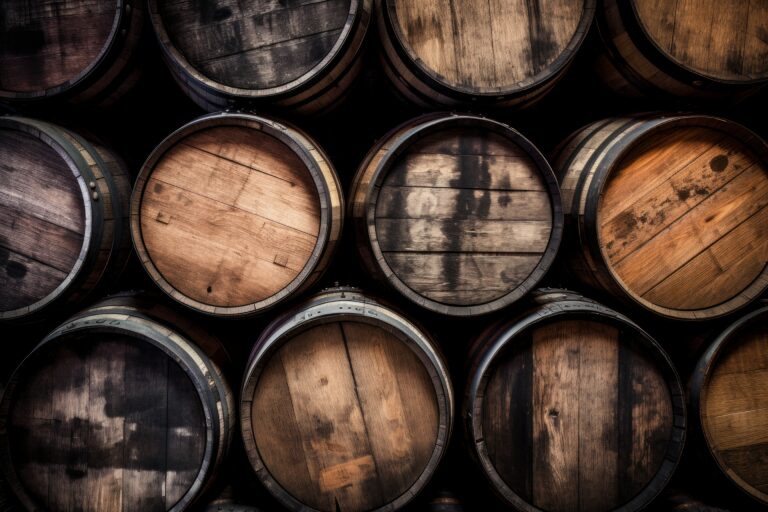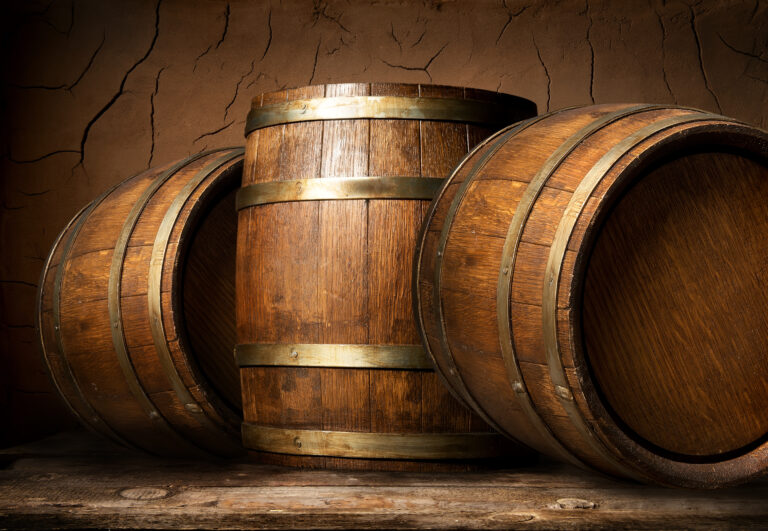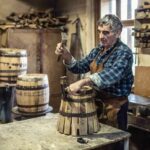You’re probably picturing a craft that’s been the same for centuries when you think about barrel making. After all, people have been using barrels to store and move stuff since ancient times. But while those traditional skills are still absolutely essential, coopering has gotten a major upgrade thanks to modern technology. From laser-guided tools to sensors that keep an eye on the aging process, technology is making barrels better than ever. The timeless craft of coopering is alive and well, but now it has some seriously innovative tools and techniques. Let’s dive into how tech is being applied to barrel making and helping coopers craft amazing barrels. The ancient craft is officially meeting its future.
A Brief History of Barrel Making
For generations, coopers painstakingly made barrels by hand, learning the trade through apprenticeships. They’d shape the staves and hoops, building up the barrel walls and securing everything in place to create watertight containers. These were used to store and age everything from wine and whiskey to pickles and flour.
While you’ll still find some coopers using those traditional methods and tools, many have started to bring in new tech. We’re talking about things like computer-controlled machines that shape and toast barrels with incredible precision, and even robotic systems for bending and charring the wood.
These modern techniques don’t replace the cooper’s skill; they just make the work more efficient and give them a level of consistency and control that was tough to get with old-school methods alone.
That said, there’s still a huge demand for barrels made the traditional way. Many people believe handcrafted barrels are superior, especially for aging fine wines and spirits, because they allow for more complex and subtle flavors to develop.
Whether they’re using a computer or a hand tool, coopers are still dedicated to this art form that has lasted for so long. By mixing the new with the old, they’re making sure that barrel making is a craft that will stick around for a very long time.
Traditional Barrel Making Methods and Tools
Traditional barrel making is a true art form passed down from one generation of craftspeople to the next. For centuries, the basic process, tools, and materials haven’t changed much.
Materials
A classic barrel is made from wooden staves, metal hoops, and a wooden or cork stopper. Oak has always been the top choice because it’s strong, resists leaks, and, most importantly, adds delicious flavor to what’s inside. The metal hoops, usually iron, are what hold all the staves together.
Tools
A cooper uses simple tools like a mallet and a driver to hammer the hoops into place. Other key tools include a croze (which cuts the groove for the barrel head) and a chamfer knife (to bevel the edges of the staves). But the most important tool a cooper has? Their own skilled hands.
The Barrel Assembly Process
After a cooper selects and shapes the staves, they use temporary hoops to “raise” them into a barrel shape. The staves are tapered to fit together snugly, then sanded smooth. Next, the permanent hoops are hammered on. The barrel heads are shaped to fit into the croze and seal the barrel. Finally, the bungholes and stoppers are added.
While technology has changed countless other industries, traditional barrel making remains a timeless process. Coopers today still rely on skills passed down over hundreds of years to handcraft barrels that give character to fine wines and spirits. Whether the wood is French oak or American oak, the ancient craft of the cooper continues to thrive.
The Rise of Modern Technology in Cooperages
The cooperage industry has seen some massive changes thanks to modern technology. Many traditional barrel making techniques have been upgraded or even replaced by automated processes, leading to greater efficiency and consistency.
Computer-Aided Design
A lot of cooperages now use CAD software to design barrels and their components with incredible precision. CAD streamlines the design process and gives a super accurate digital model of the finished product before any wood is even cut.
Automated Cutting
The old way of manually sawing staves and other barrel parts was slow and hard work. Now, computer-controlled saws cut wood to exact measurements, saving tons of labor. Some of these systems can even scan the wood to figure out the best way to cut it based on the grain.
Automated Planing and Shaping
After the wood is cut, the staves need to be planed and shaped so they fit together perfectly. Power planers and shapers do this job quickly and consistently, so no one has to do it by hand anymore.
Computer-Controlled Toasting
Toasting the inside of a barrel is a delicate process that requires careful control of both temperature and time. Now, computer-controlled convection ovens can automatically toast barrels to the exact specifications a winemaker or distiller needs. Sensors provide real-time data, ensuring consistent results every single time.
While barrel making will always be a craft, modern technology has definitely transformed the trade. By automating the production, coopers can focus their skills on the parts of the job where their judgment and experience really matter. The result is a perfect blend of tradition and tech.
CAD for Precision Stave Cutting
Computer-aided design (CAD) software has truly revolutionized barrel making. These programs let coopers design barrel staves with a level of precision and efficiency that was impossible before.
Precision Cutting
With CAD, coopers can program automated cutting machines to slice staves to exact specifications. The software creates digital blueprints that are sent straight to the cutting equipment, which then cuts the staves to precise angles and curves. This means the staves fit together perfectly, which is crucial for making a watertight barrel.
Increased Efficiency
CAD makes the stave-cutting process so much faster. Coopers don’t have to manually measure, mark, and cut each stave by hand. They just input their designs, and the machines handle the rest. This frees up their time so they can focus on other important parts of the process like raising and toasting the barrels.
Custom Designs
CAD gives coopers a ton of flexibility to create unique stave designs. They can easily adjust angles, lengths, and shapes to fit different barrel sizes and styles. Want curved staves for a brandy barrel or tapered ones for a beer barrel? CAD makes it all possible, giving coopers endless design options.
Wood Optimization
By programming cutting patterns into the software, coopers can get the most out of every single plank of wood. The software finds the best way to lay out the stave shapes to minimize waste. This wood-efficient approach is not only better for the environment but also for the cooper’s bottom line.
While the old-school way relied on a cooper’s skill with hand tools, CAD and automated cutting equipment have brought in a new level of precision and efficiency. At the same time, these technologies offer more design freedom, allowing coopers to create barrels as unique as the wines and spirits they’ll hold. By blending modern tech with timeless craft, coopers are making higher-quality barrels than ever.
Automated Barrel Assembly and Robotic Arms
Robotic arms and automated assembly lines are changing how barrels are put together. Barrel making was always a very hands-on, labor-intensive process, but modern technology is helping to streamline production.
Robotic Barrel Assembly Lines
Automated assembly lines use robotic arms to handle all the different barrel parts—the staves, hoops, and heads—and assemble them super efficiently. The robotic arms are programmed to grab, lift, and manipulate the wood pieces to put a barrel together in a precise sequence. These automated systems can assemble barrels much faster and more consistently than a human cooper. Some of them can even crank out up to 1,000 barrels a day.
3D Scanning and Cutting
High-tech 3D laser scanners are now used to scan the inside and outside of barrels. These scans then guide saws and cutters to shape the staves and heads to exact specifications. This automated cutting creates components that fit together perfectly, which speeds up the assembly process. The 3D scans can also be used to recreate specific barrel shapes and sizes, allowing for incredibly consistent and customized barrel production.
Toasting and Charring
Some barrel makers also use automated systems to toast and char the inside of barrels after they’re assembled. Robotic arms hold the barrels over a fire, charring and toasting the wood to the right intensity based on specific recipes to get the flavors needed for wine or spirit aging. This automation helps standardize the process and ensures consistent results.
While technology has changed a lot of things, skilled coopers are still absolutely essential to the craft. Their knowledge, experience, and artistry will always be crucial for producing the highest quality barrels. Technology simply helps them be more efficient, ramp up production, and gain more precision and control over this timeless craft. The perfect mix of human skill and modern technology is helping barrel making reach new heights.
Temperature and Humidity Controls for Seasoning Barrels
Controlling the temperature and humidity while seasoning barrels is a critical step in getting the results you want. The wood in the barrels needs to be kept in ideal conditions as it expands and contracts during this process.
Temperature
The barrel room temperature should stay steady, somewhere between 15°C and 20°C (59°F and 68°F). Wild temperature swings can cause the staves to warp and the barrel to leak. Use a reliable thermostat to keep things consistent.
Humidity
Humidity levels are just as important. You want to aim for 65% to 80% relative humidity. Too much humidity can lead to mold, while too little will dry the barrels out and cause them to crack. Use a hygrometer to monitor the humidity and a humidifier or dehumidifier to make adjustments as needed.
Ventilation
Good ventilation circulates the air and prevents it from getting stale. Barrel rooms should have exhaust fans to pull out moist air and bring in fresh air. Stagnant air won’t properly season the barrels.
Location
Choose a barrel room location that’s away from outside walls, attics, or basements, where temperatures are harder to control. An interior room, like on the main floor of a warehouse, will give you the most stable environment.
Maintenance
Check your temperature, humidity, and ventilation levels at least twice a day during the first month of seasoning, and then once a day after that. Make any adjustments right away to keep the barrels in the ideal range. This consistent monitoring and quick action will lead to a top-quality product.
By carefully controlling the temperature and humidity, your barrels will season perfectly, developing the exact aroma, color, and taste you’re after. Mastering these factors is key to crafting a standout artisanal product. Thoughtfully seasoning each barrel allows the subtle flavors from the wood and char to really shine, creating a truly exceptional spirit.
The Science of Oak: Chemical Analysis and Selection
The type of oak used is absolutely critical to the flavor and quality of a barrel. The wood from certain oak trees, like American white oak and French oak, is ideal for barrel making. But even within those species, the specific oak chosen makes a huge difference.
Location and Growing Conditions
Where and how an oak tree grows has a major impact on its wood. Oaks that grow in dense forests produce wood with narrow growth rings, which means they grew slowly. This dense, fine-grained wood is perfect for barrel making. Oaks that grow in open areas grow faster, resulting in wider growth rings and wood that isn’t as good for barrels.
Chemical Composition
The chemical composition of oak wood varies from tree to tree and based on where it grew. Oaks with higher levels of compounds like vanillin, syringaldehyde, and furfural will give more flavor to the contents of the barrel. Oaks high in tannins and lignins also help age wine and spirits beautifully.
Some coopers now use techniques like chromatography and mass spectrometry to analyze the oak wood for these flavor-contributing compounds before they even select a tree for staves. This lets them map out a tree’s chemical profile and predict how it will affect the barrel’s contents. They can then choose staves that will achieve the exact flavor profile they’re looking for.
Seasoning the Wood
After the oak is cut into staves, coopers let the wood season for at least two years. This process reduces moisture, making the wood more stable and watertight. Natural chemical changes also happen during seasoning that further improve the oak’s suitability for barrel making.
Seasoning the staves helps ensure consistency between barrels. By seasoning the wood and analyzing its chemical composition before crafting barrels, coopers can have precise control over the flavor and aroma compounds that the oak transfers to wine and spirits during aging. While barrel making is a timeless craft, new technologies give coopers a deeper understanding of oak at a molecular level.
Inspecting Barrels With HD Video Scopes
In the past, checking the inside of barrels for flaws was a slow, manual process. You had to physically look into each one by hand, and it was easy to miss small imperfections. Today, cooperages are using high-definition video scopes to inspect barrels quickly and thoroughly.
HD video scopes are basically waterproof, high-resolution cameras on flexible probes that can be inserted through the bunghole or the heads of the barrels. Operators guide the probes to get a good look at the entire inside surface.
The scopes capture clear, high-def footage that’s shown on big monitors, letting inspectors closely analyze the wood for any cracks, leaks, or other flaws that could mess with quality or flavor. Tiny imperfections that would have been missed by a manual inspection can now be easily spotted.
This technology speeds up the inspection process a ton. What used to take coopers hours to inspect by hand can now be done in just a few minutes per barrel. This means more barrels get inspected in less time, which is a huge win for quality control.
The footage and images from these inspections are saved digitally, so coopers can go back and double-check barrels if they need to. The archive also acts as a permanent record of a barrel’s condition for its entire lifespan.
Innovations like HD video scopes show how modern technology is helping to improve time-honored crafts like barrel making. While traditional coopering skills and techniques are still super important, smart tech is boosting quality, efficiency, and record-keeping. The combination of craft and tech is helping barrel makers stay at the top of their game while honoring tradition.
The Future of Barrel Making: Blending Tradition With Technology
The future of barrel making is all about blending time-honored traditions with modern technology. As the demand for premium wines and spirits keeps growing, barrel makers are using new, innovative techniques to increase production without sacrificing quality.
Automation
Many stages of the barrel-making process that were once done by hand are now automated. For instance, barrel staves that were once hand-split are now machine-cut with precision using automated saws and lathes. Hoop driving, which secures the barrel staves together, is also largely automated with hydraulic hoop drivers. These technologies speed up production while ensuring every barrel is consistent.
Monitoring
Sensors and smart devices let barrel makers closely monitor barrels as they age. They can track the temperature, humidity, and carbon dioxide levels inside barrels to make sure conditions are perfect for maturation. Smart sensors can also detect leaks early on, so barrels can be repaired or replaced before too much liquid is lost. All of this data helps coopers fine-tune and improve the barrel-aging process.
Eco-Friendly Materials
Some distillers are experimenting with barrels made from more sustainable woods like acacia, chestnut, and redwood in addition to the traditional oak. These alternative woods can give spirits unique flavors and aromas. Reusing barrels multiple times—either for the same spirit or different ones—is another eco-friendly practice that some distillers have adopted.
While technology has changed barrel making, the essential artisanal craft of coopers is still very much alive. Human expertise, patience, and care are still crucial for producing the barrels that result in premium, full-flavored wines and spirits. By blending new technologies with old techniques, coopers are ensuring that the ancient craft of barrel making will thrive for generations to come.
Final Thoughts
So there you have it: technology is advancing barrel making in some really cool ways. While the ancient craft of cooperage has been around forever, modern innovations are helping create higher-quality barrels more efficiently and sustainably. Laser scanning, precision cutting, and automated production allow for an incredible level of accuracy and consistency. But at the same time, the craftspeople are still at the heart of the process, overseeing the machines and making sure there’s an artisanal touch. The result is a perfect harmony of technology and tradition. Barrel making has come a long way, but its timeless spirit lives on. The next time you open a bottle of wine or whiskey, raise a glass to the coopers who made it all possible. Their age-old craft is in good hands, and the future of barrel making looks pretty bright.







